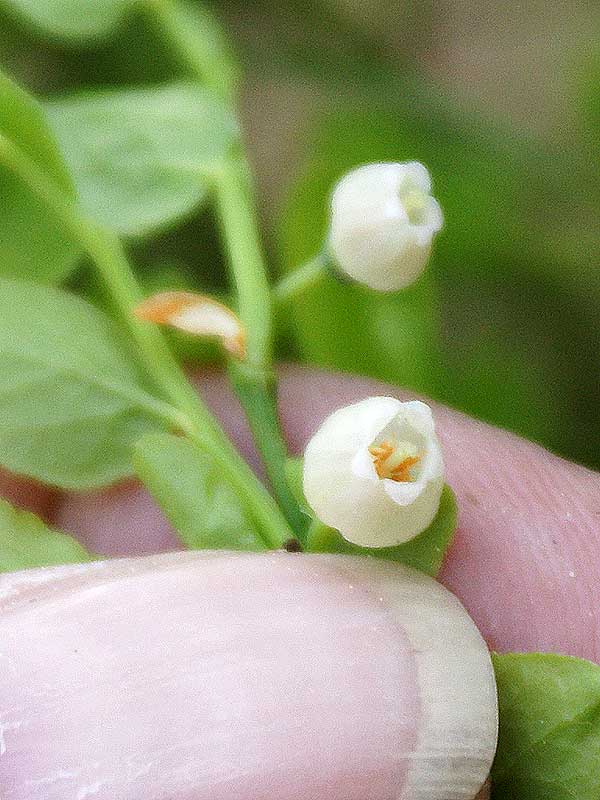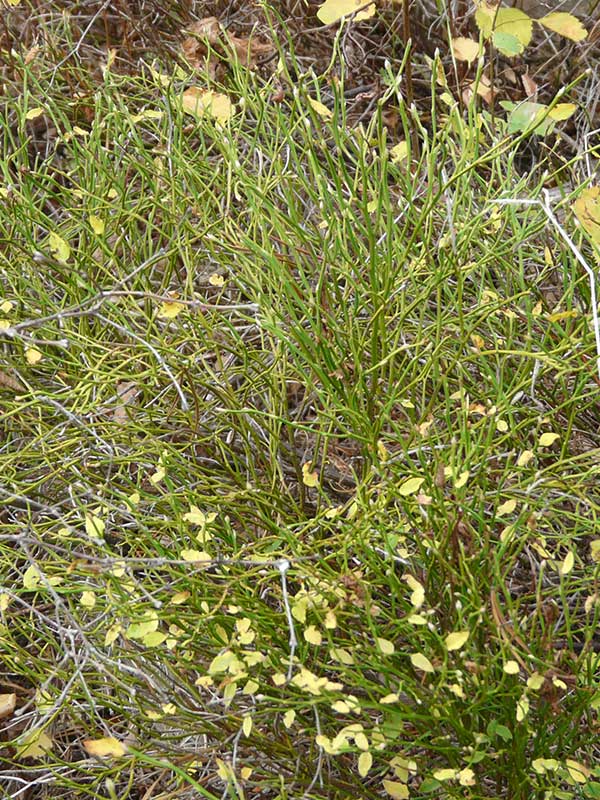Vaccinium scoparium / grouse whortleberry
- low growing deciduous shrub
- clonally spreading
- green twigs and small (3/4 inch), oval, light green leaves
- teeny, pendant, urn-shaped white/pink flowers
- red berries in fall
Also known as: grouseberry
Vaccinium scoparium is a squat, bushy shrub growing not more than about two feet tall and generally limited to higher elevations. It frequently dominates the shrub layer of subalpine forests, and is otherwise found in forests, meadows and on talus slopes.
Grouse whortleberry grows in clumps, being clonal and spreading by rhizomes and by layering, i.e. the stems root where they come in contact with moist soil. The new twigs are green and stay that way for quite a while. They are also strongly angled from the stems, forming an overall structure that is sort of like a broom. Indeed, it has been used as such. The specific name, scoparium, means broom-like.
Grouse whortleberry is deciduous with alternate leaves. The leaves have slightly serrated edges and are oval, about 3/4 of an inch long. In the autumn, before they fall, they turn a weak yellow. See the gallery photo.
The shrub has whitish or pink flowers that look a lot like blueberry or huckleberry flowers, or heather flowers. They are urn-shaped, and hang from the bases of the lower leaves on young shoots. The stamens, visible deep within the urn, are red.
The grouse whortleberry fruit is a red berry, about 1/4 inch in diameter. Unlike many red berries, these are edible, having either a sweet (like a sweet blueberry) or a tart flavor, depending on who you ask. More often, they are eaten by birds and animals. The shrub provides food for large mammals (elk, mule deer, bears) as well as for squirrels, foxes, skunks and various birds.
| Color | |
|---|---|
| Family | |
| Blossom size | |
| Inflorescence size | |
| Inflorescence type | |
| When? | |
| Where? | coniferous forests, higher altitudes, meadows, shaded edges, understory |




